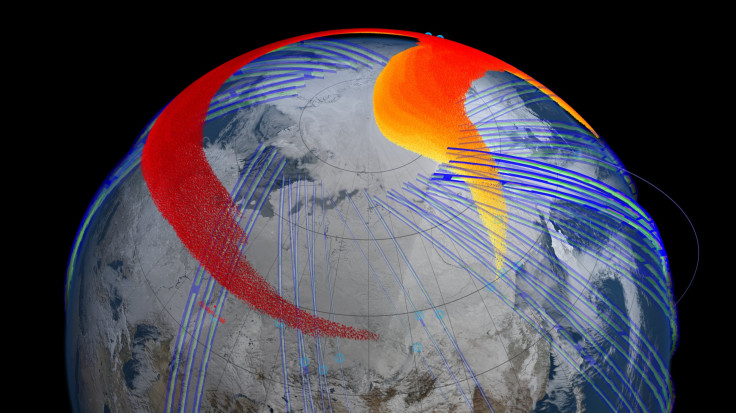Russia Chelyabinsk Meteor Created 'Dust Belt' In Stratosphere Tracked By NASA Scientists

The schoolbus-sized meteor that exploded over the Russian city of Chelyabinsk in February left a lot of things in its wake: more than 1,000 injured people and more than $33 million in damage. The meteor also left behind another telltale sign of its passing -- a dusty layer in the stratosphere persisting for months, which scientists now say they’ve been able to track with satellites.
The Chelyabinsk meteor rocketed down from space, reaching the blisteringly fast speed of 41,600 miles per hour before exploding 14.5 miles above the city. The meteor’s fiery death released an energy equivalent to more than 30 times the power of the atomic bomb that destroyed Hiroshima. While some pieces of the meteor fell to Earth, they weren't directly responsible for injuries or damage. Virtually all of the injuries recorded from the meteor weren't from the rock itself, but from secondary effects like broken windows. Much of the obliterated meteor dispersed into the sky as dust.
Now, thanks to modern technology, scientists can't only trace the meteor’s path before the explosion but can also follow it afterward. By plugging satellite measurements into atmospheric models, NASA scientists were able to simulate how the plume from the exploded Chelyabinsk meteor was carried by the jet stream around the Northern Hemisphere.
"Thirty years ago, we could only state that the plume was embedded in the stratospheric jet stream," Paul Newman, chief scientist for the atmospheric science lab at NASA’s Goddard Space Flight Center, said in a statement. "Today, our models allow us to precisely trace [the dust from] the bolide and understand its evolution as it moves around the globe."
Satellites were able to detect the dust plume from the meteor as early as three and a half hours after the explosion. A polar-orbiting satellite (which circles the north and south poles, rather than moving west to east) found the remains of Chelyabinsk rising into the atmosphere at 25 miles above the ground, moving east at 190 miles per hour. A day after the explosion, the same satellite saw the dust drifting toward the Aleutian islands off the coast of Alaska, which mark the westernmost point in the U.S. Four days after the explosion, part of the plume had already circled the globe and made its way back to Chelyabinsk.
Still, the dust remains. Though some heavier particles eventually drifted down toward the ground, at least three months later, satellites could still detect a belt of dust from the meteor circling Earth. The volume of Chelyabinsk dust pales in comparison to the dust that bombards Earth from space each day or the amount of dust belched forth by volcanoes. The study is the first time that NASA has been able to track the dust from such a major meteoric explosion and could open the door to a raft of new studies, ranging from tracking other meteor explosions to determining whether the dust from Chelyabinsk rock is affecting the clouds of the stratosphere.
“We saw the formation of a new dust belt in Earth's stratosphere, and achieved the first space-based observation of the long-term evolution of a bolide plume,” NASA scientist and study leader Nick Gorkavyi (who just so happens to hail from Chelyabinsk), said in a statement.
A paper detailing the NASA researchers’ findings is forthcoming in the journal Geophysical Research Letters.
© Copyright IBTimes 2024. All rights reserved.





















